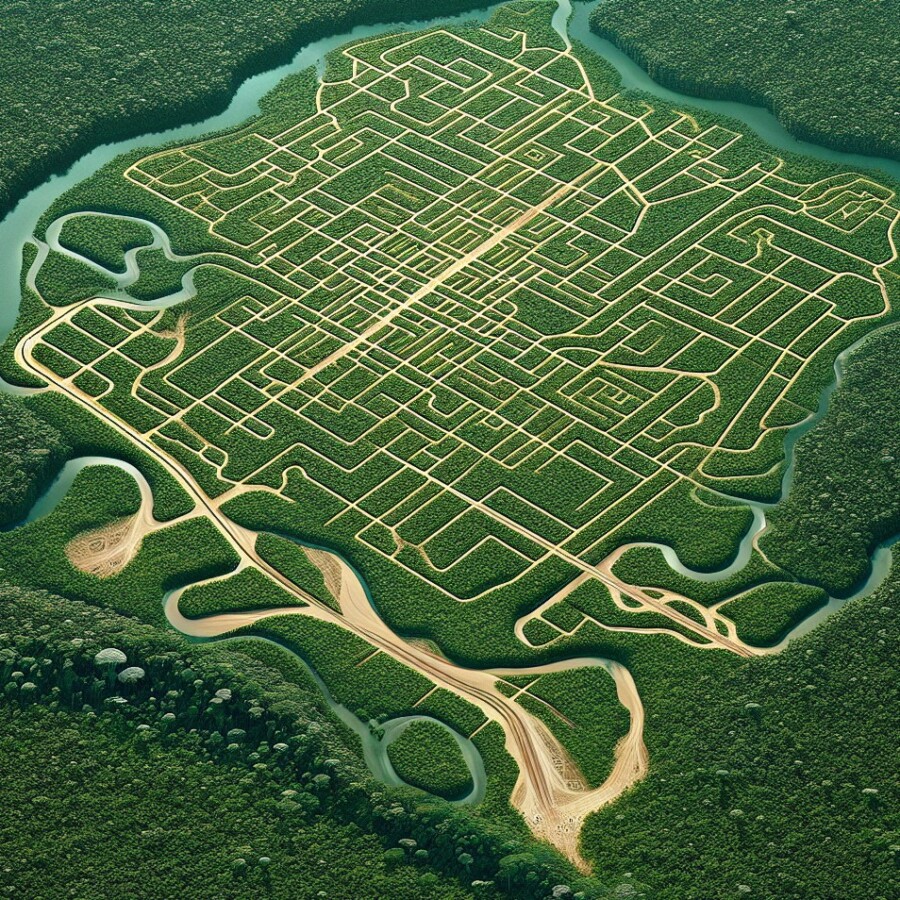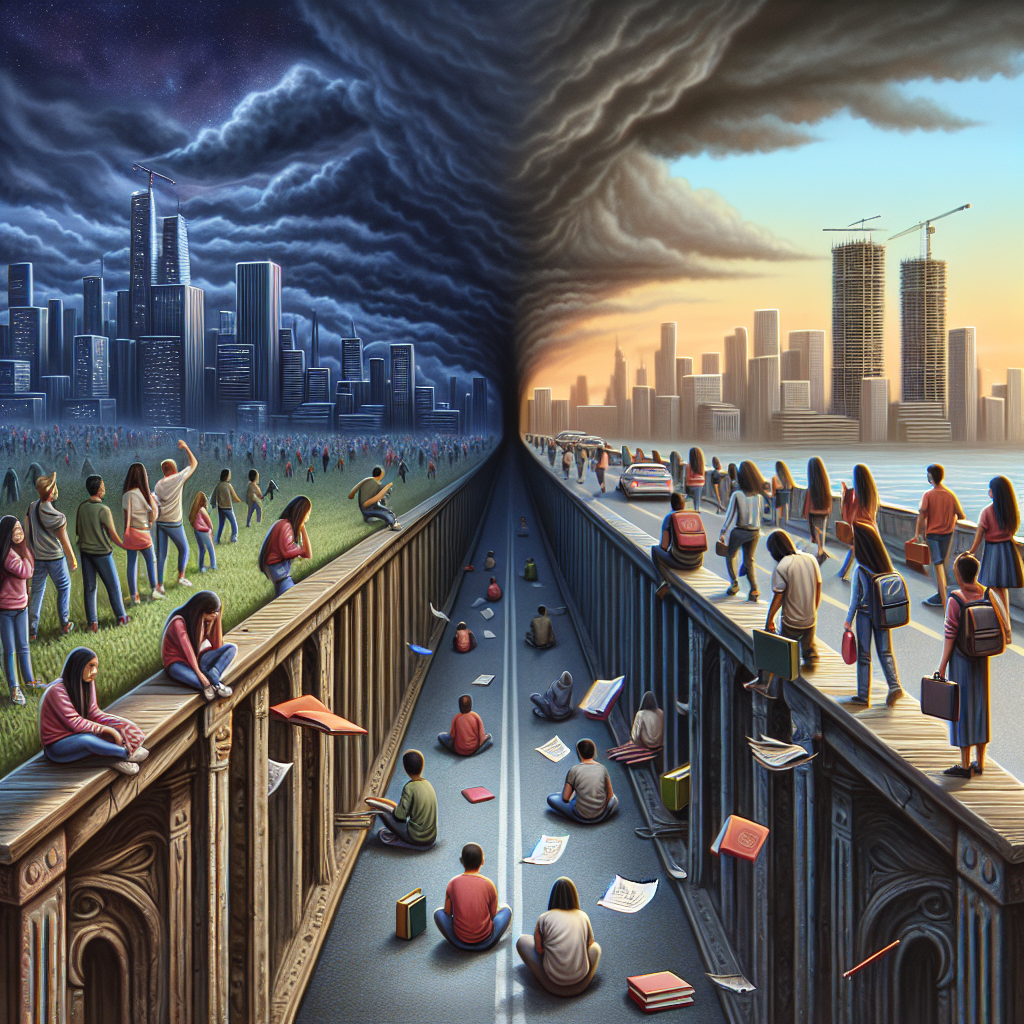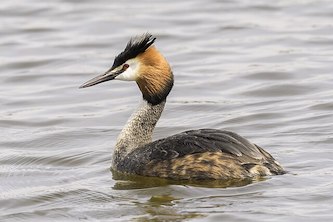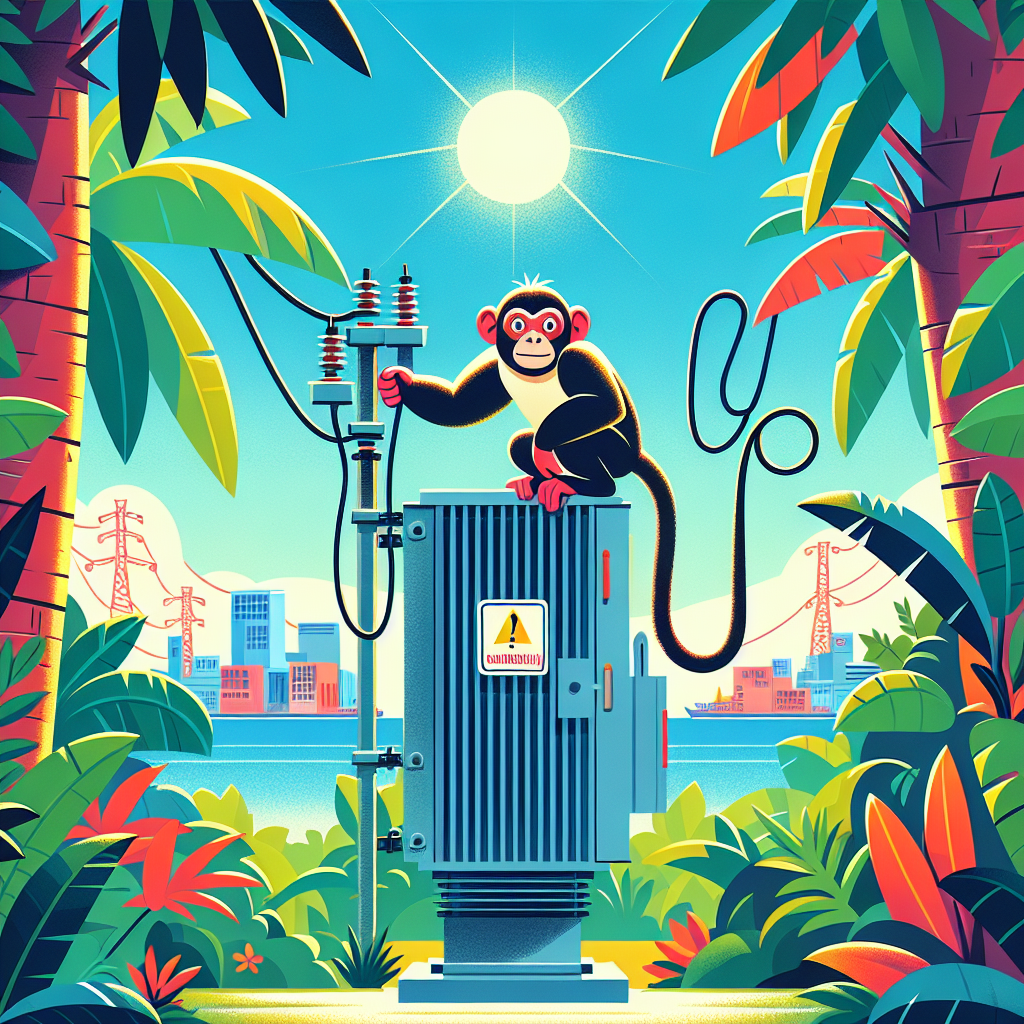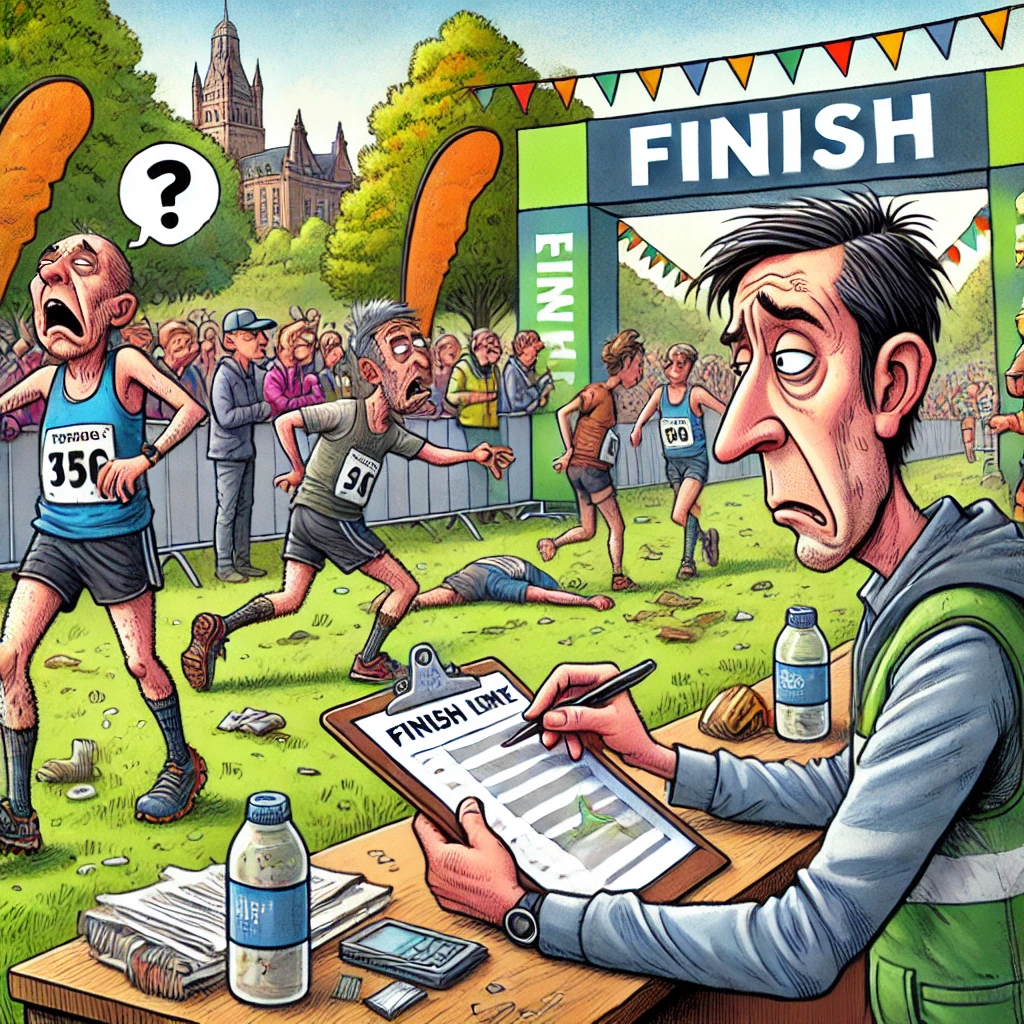Scientists found a very old city in the Amazon jungle. The city was covered by plants for a very long time. People who lived there had houses, open spaces, roads, and waterways. They think the city was made about 2,500 years ago and people lived there for 1,000 years.
Before, people thought only small groups lived in the Amazon. But this big city shows that the people there were smarter and better at building things than we thought. To find the city, scientists dug in the ground and used special tools on a plane. They saw 6,000 shapes that looked like houses and special buildings.
This city shows us that the people in the Amazon long ago had big towns, not just small groups in little houses. Maybe tens of thousands of people lived there. They made roads in straight lines and had ways to control water. Now, scientists want to learn more about the old cities in the Amazon.
Original news source: Huge ancient lost city found in the Amazon (BBC)
🎧 Listen:
Slow
Normal
Fast
📖 Vocabulary:
| 1 | ancient | Very, very old |
| 2 | vegetation | Plants and green stuff that grows outside |
| 3 | structures | Buildings or things that are made or built |
| 4 | civilization | A big group of people living together in a city or town a long time ago |
| 5 | archaeologists | Scientists who dig up old things from the ground to learn about the past |
| 6 | excavated | Dug up the ground to find old things |
| 7 | sophisticated | Really smart or clever, especially in making or building things |
| 8 | aerial | Something related to being up in the sky or flying |
| 9 | remnants | Pieces left over from something that was once there |
| 10 | metropolis | A very big city with lots of people |
| 11 | linear | Straight like a line, not curvy |
| 12 | irrigation | A way of bringing water to places where plants grow |
Group or Classroom Activities
Warm-up Activities:
– Charades
Instructions: Divide the class into teams. Each team will take turns acting out a word or phrase related to the article (e.g. jungle, city, houses, roads). The other teams have to guess what the word or phrase is within a certain time limit. The team with the most correct guesses wins.
– News Summary
Instructions: In pairs, students take turns summarizing the key points of the article to their partner. They should try to include important details such as when the city was built, how long people lived there, and what the discovery tells us about the people in the Amazon. After both partners have summarized, they can compare their summaries and discuss any differences or missing information.
– Vocabulary Pictionary
Instructions: Give each student a piece of paper and a pen or pencil. One student chooses a word from the article and draws a picture to represent that word, without using any letters or numbers. The other students have to guess what word is being represented. The student who guesses correctly gets to draw the next word.
– Speed Summarizing
Instructions: Divide the class into pairs. Give each pair a copy of the article. Set a timer for 3 minutes. Students take turns summarizing as much of the article as they can in that time. After 3 minutes, they switch roles. The pair with the most accurate and complete summary wins.
– Think-Pair-Share
Instructions: Have students think individually about the following question: “What do you think the discovery of this ancient city tells us about the history of the Amazon and its people?” After a few minutes, pair students up and have them share their thoughts with each other. Finally, facilitate a class discussion where students can share their ideas and opinions.
🤔 Comprehension Questions:
1. What did scientists find in the Amazon jungle?
2. How long ago do scientists think the city was made?
3. How did scientists find the city?
4. What did the city show about the people who lived there?
5. How many shapes did scientists see that looked like houses and special buildings?
6. How did the people in the city control water?
7. What do scientists want to learn more about?
Go to answers ⇩
🎧✍️ Listen and Fill in the Gaps:
Scientists found a very old city in the Amazon jungle. The city was (1)______ by plants for a very (2)______ time. People who lived there had houses, (3)______ spaces, roads, and waterways. They think the city was made about 2,500 years ago and people lived there for 1,000 years.
Before, people thought only (4)______ groups lived in the Amazon. But this big (5)______ shows that the people there were smarter and better at building (6)______ than we thought. To find the city, scientists dug in the ground and (7)______ (8)______ tools on a plane. They saw 6,000 shapes that looked like houses and special buildings.
This city shows us that the people in the Amazon long ago had big (9)______, not just small groups in little (10)______. Maybe tens of thousands of people lived there. They (11)______ roads in straight lines and had ways to control water. Now, (12)______ want to learn more about the old cities in the Amazon.
Go to answers ⇩
💬 Discussion Questions:
Students can ask a partner these questions, or discuss them as a group.
1. What do you think it would be like to live in a city covered by plants?
2. How would you feel if you found out that people in the past were smarter and better at building things than we thought?
3. Do you like exploring and learning about ancient cities? Why or why not?
4. What do you think it means to control water?
5. How do you think the people in the Amazon made roads in straight lines?
6. Do you think it’s important for scientists to learn more about the old cities in the Amazon? Why or why not?
7. What would you do if you found a hidden city in the jungle?
8. How do you think the people in the ancient city communicated with each other?
9. What do you think it was like to live in a big town with tens of thousands of people?
10. Why do you think the city was covered by plants for a very long time?
11. How would you feel if you discovered something that changed what people thought about history?
12. Do you think there are more hidden cities waiting to be discovered in the world? Why or why not?
Individual Activities
📖💭 Vocabulary Meanings:
Match each word to its meaning.
Words:
1. ancient
2. vegetation
3. structures
4. civilization
5. archaeologists
6. excavated
7. sophisticated
8. aerial
9. remnants
10. metropolis
11. linear
12. irrigation
Meanings:
(A) Really smart or clever, especially in making or building things
(B) A big group of people living together in a city or town a long time ago
(C) Scientists who dig up old things from the ground to learn about the past
(D) Dug up the ground to find old things
(E) Something related to being up in the sky or flying
(F) Straight like a line, not curvy
(G) Plants and green stuff that grows outside
(H) Buildings or things that are made or built
(I) A very big city with lots of people
(J) A way of bringing water to places where plants grow
(K) Pieces left over from something that was once there
(L) Very, very old
Go to answers ⇩
🔡 Multiple Choice Questions:
1. How old is the city found in the Amazon jungle?
(a) 100 years
(b) 500 years
(c) 1,000 years
(d) 2,500 years
2. What did scientists use to find the city in the Amazon jungle?
(a) Binoculars
(b) Special tools on a plane
(c) A telescope
(d) A microscope
3. What did the city in the Amazon jungle have?
(a) Only houses
(b) Houses, open spaces, roads, and waterways
(c) Only open spaces
(d) Only roads
4. What did people previously think about the people living in the Amazon?
(a) Only small groups lived there
(b) Only big cities existed
(c) No one lived there
(d) Only animals lived there
5. How many shapes did scientists see that looked like houses and special buildings?
(a) 1,000
(b) 500
(c) 6,000
(d) 10,000
6. How did people in the Amazon control water?
(a) They didn’t control water
(b) They used buckets
(c) They used hoses
(d) They had ways to control water
7. What do scientists want to do now?
(a) Forget about the old cities in the Amazon
(b) Build new cities in the Amazon
(c) Learn more about the old cities in the Amazon
(d) Destroy the old cities in the Amazon
8. How many people may have lived in the city found in the Amazon jungle?
(a) Tens of thousands
(b) Only a few
(c) Hundreds
(d) Millions
Go to answers ⇩
🕵️ True or False Questions:
1. Scientists discovered an ancient city in the Amazon jungle that was covered by plants for a very long time.
2. To find the city, scientists dug in the ground and used special tools on a plane, which helped them identify around 6,000 shapes resembling houses and special buildings.
3. The people who lived in this city had houses, open spaces, roads, and waterways.
4. Scientists are not eager to learn more about the other old cities in the Amazon.
5. The city is estimated to have been built around 500 years ago and was inhabited for about 500 years.
6. It is impossible that tens of thousands of people lived in this city, as they had curved roads and no methods to control water.
7. This ancient city disproves the idea that the people in the Amazon had large towns, instead they just had small groups living in little houses.
8. Previously, it was believed that only small groups of people lived in the Amazon, but this discovery proves that they were smarter and better at building than we thought.
Go to answers ⇩
📝 Write a Summary:
Write a summary of this news article in two sentences.
Check your writing now with the best free AI for English writing!
Writing Questions:
Answer the following questions. Write as much as you can for each answer.
Check your answers with our free English writing assistant!
1. What did scientists find in the Amazon jungle?
2. How long do scientists think the city was made ago?
3. How did scientists find the city?
4. What did the city show about the people who lived there?
5. What do scientists want to learn more about?
✅ Answers
🤔✅ Comprehension Question Answers:
1. What did scientists find in the Amazon jungle?
Scientists found a very old city in the Amazon jungle.
2. How long ago do scientists think the city was made?
Scientists think the city was made about 2,500 years ago.
3. How did scientists find the city?
Scientists dug in the ground and used special tools on a plane to find the city.
4. What did the city show about the people who lived there?
The city showed that the people who lived there were smarter and better at building things than we thought.
5. How many shapes did scientists see that looked like houses and special buildings?
Scientists saw 6,000 shapes that looked like houses and special buildings.
6. How did the people in the city control water?
The people in the city had ways to control water.
7. What do scientists want to learn more about?
Scientists want to learn more about the old cities in the Amazon.
Go back to questions ⇧
🎧✍️✅ Listen and Fill in the Gaps Answers:
(1) covered
(2) long
(3) open
(4) small
(5) city
(6) things
(7) used
(8) special
(9) towns
(10) houses
(11) made
(12) scientists
Go back to questions ⇧
📖💭✅ Vocabulary Meanings Answers:
1. ancient
Answer: (L) Very, very old
2. vegetation
Answer: (G) Plants and green stuff that grows outside
3. structures
Answer: (H) Buildings or things that are made or built
4. civilization
Answer: (B) A big group of people living together in a city or town a long time ago
5. archaeologists
Answer: (C) Scientists who dig up old things from the ground to learn about the past
6. excavated
Answer: (D) Dug up the ground to find old things
7. sophisticated
Answer: (A) Really smart or clever, especially in making or building things
8. aerial
Answer: (E) Something related to being up in the sky or flying
9. remnants
Answer: (K) Pieces left over from something that was once there
10. metropolis
Answer: (I) A very big city with lots of people
11. linear
Answer: (F) Straight like a line, not curvy
12. irrigation
Answer: (J) A way of bringing water to places where plants grow
Go back to questions ⇧
🔡✅ Multiple Choice Answers:
1. How old is the city found in the Amazon jungle?
Answer: (d) 2,500 years
2. What did scientists use to find the city in the Amazon jungle?
Answer: (b) Special tools on a plane
3. What did the city in the Amazon jungle have?
Answer: (b) Houses, open spaces, roads, and waterways
4. What did people previously think about the people living in the Amazon?
Answer: (a) Only small groups lived there
5. How many shapes did scientists see that looked like houses and special buildings?
Answer: (c) 6,000
6. How did people in the Amazon control water?
Answer: (d) They had ways to control water
7. What do scientists want to do now?
Answer: (c) Learn more about the old cities in the Amazon
8. How many people may have lived in the city found in the Amazon jungle?
Answer: (a) Tens of thousands
Go back to questions ⇧
🕵️✅ True or False Answers:
1. Scientists discovered an ancient city in the Amazon jungle that was covered by plants for a very long time. (Answer: True)
2. To find the city, scientists dug in the ground and used special tools on a plane, which helped them identify around 6,000 shapes resembling houses and special buildings. (Answer: True)
3. The people who lived in this city had houses, open spaces, roads, and waterways. (Answer: True)
4. Scientists are not eager to learn more about the other old cities in the Amazon. (Answer: False)
5. The city is estimated to have been built around 500 years ago and was inhabited for about 500 years. (Answer: False)
6. It is impossible that tens of thousands of people lived in this city, as they had curved roads and no methods to control water. (Answer: False)
7. This ancient city disproves the idea that the people in the Amazon had large towns, instead they just had small groups living in little houses. (Answer: False)
8. Previously, it was believed that only small groups of people lived in the Amazon, but this discovery proves that they were smarter and better at building than we thought. (Answer: True)
Go back to questions ⇧



